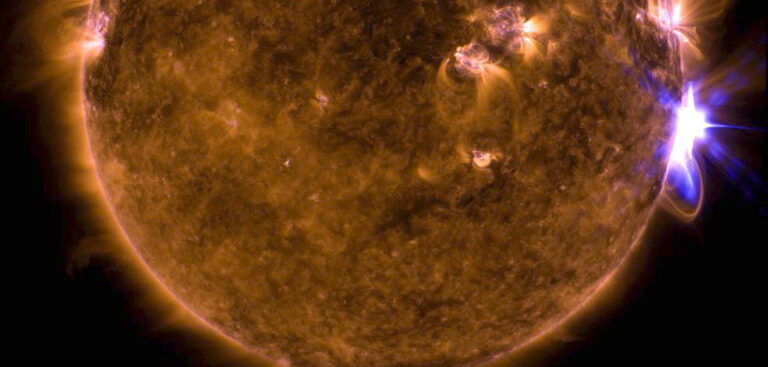Amazon announced that it is working with NASA on a new app that it is hoped will help better predict solar superstorms.
The joint venture is a collaboration between the space agency and Amazon Web Services (AWS) Professional Services and Machine-Learning (ML) Solutions Lab. The AWS lab is using machine-learning to spot anomalies – identified by NASA – that could be predictive of these rare solar events.
The lab’s technology is capable of examining as many as 1,000 data sets simultaneously to find patterns unique to superstorms. In a blogpost, Amazon explained the complexity of the task ahead.
“Given just how rare superstorms are, there are very few historical examples that can be used to train algorithms. This makes common machine-learning approaches like supervised learning woefully inadequate for predicting superstorms,” it said.
“Additionally, with dozens of past and current satellites gathering space weather information from different key vantage points around Earth, the amount of data is prodigious – and the attempt to find correlations laborious when searched conventionally.”
Though rare, solar superstorms can cause significant damage to vital infrastructure such as power lines and satellites. A superstorm in 1989, for example, knocked out power for thousands of residents living in Quebec, Canada.
The storms are caused by eruptions on the surface of the sun known as solar flares. The flares are accompanied by a burst of radiative particles called coronal mass ejections. Usually the Earth’s magnetic field stops this radiation from reaching us but occasionally the volume of particles is so high that they break through, causing damage on Earth.
Eventually NASA and Amazon plan to create a repository of publicly available data that researchers can use to improve the forecasting of superstorms.
NASA heliophysicist and lead researcher on the project Janet Kozyra said, “With Amazon, we can take every single piece of data that we have on superstorms and use anomalies we have detected to improve the models that predict and classify superstorms effectively.”



